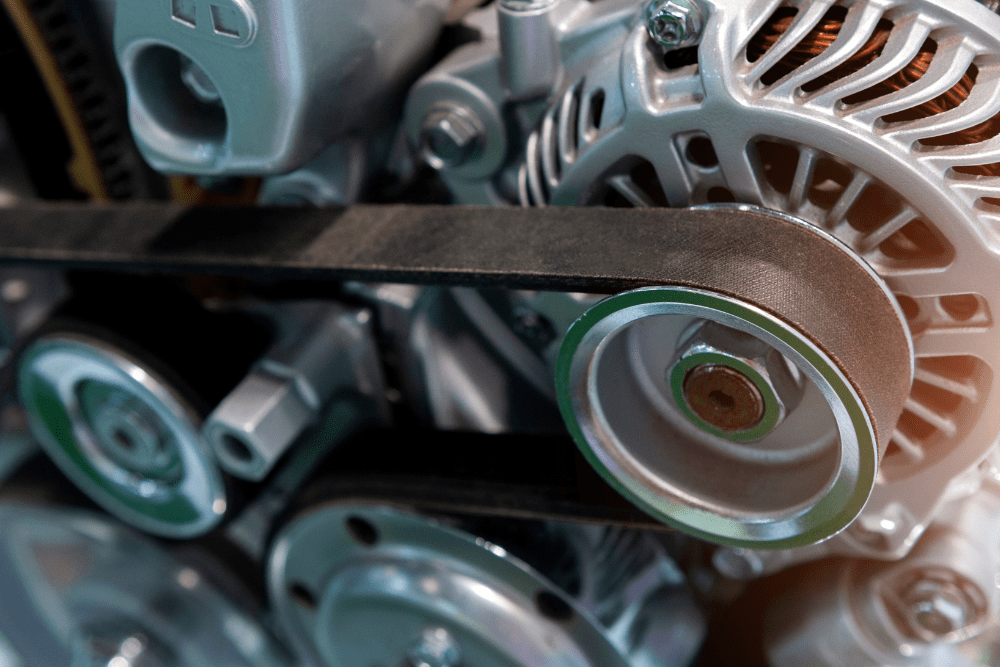How to Inspect Your Oil

If you’re like most people, you probably don’t think about your oil until it’s time for an oil change but to keep your car running, it’s also important to inspect your oil regularly. Your vehicle requires replenishment of oil to run smoothly and efficiently. By checking the oil level and quality you can keep your engine in good shape and avoid any costly repairs down the road.
Inspecting your oil is an easy process by following these simple steps:
Let your engine cool down first.
Make sure you turn your car off and let your vehicle cool down before inspection. It is recommended to wait at least 2-3 minutes depending on how long the vehicle has been running. It’s better to wait longer and be cautious to ensure you don’t burn yourself while performing work under the hood.
Your vehicle needs to be on level ground.
If your vehicle is parked on a driveway or other uneven surface, it can give inaccurate readings on the oil dipstick.
Pop open the hood.
Prop the hood up for access by pressing or pulling the lever, usually located by the driver-side door.
Locate the oil dipstick.
The dipstick is typically always yellow or orange and is found near the engine. If you’re still unsure if it is the right one, check your vehicle’s manual for help.
Remove the dipstick by pulling it out.
The dipstick is a thin piece of metal, and you should see oil at the bottom of the dipstick after pulling it out. Next, wipe off the oil with a clean lint-free towel or rag. This will ensure an accurate reading of the oil level. Proceed by reinserting the dipstick all the way in and then pulling it back out again to examine the level of oil on the dipstick.
Observe the oil level.
Look at the end of the dipstick, depending on the make and model of your car there should be two marks indicating the maximum and minimum levels of oil. The amount of oil you see on the dipstick should fall in between these marks and will determine if you need to add more. A good rule of thumb when the oil is below the minimum line is to add a quart of oil. Make sure to always add the specific oil that is recommended for your vehicle which can be found in your vehicle’s manual.
Inspect the color of the oil.
It’s also important to check the color of the oil. It should be a light brown or tan color. If it is darker in color like black or looks milky, then your oil is contaminated or has run its course. This means it’s time for an oil change.
How Often Do I Need to Check My Oil Levels?
It is recommended to check your oil levels at least once a month. As an easy reminder, you can check it whenever you fill up your gas tank. Especially before going on any road trip, it is important to check your oil to avoid any damage to your vehicle or being stranded.
Your vehicle’s oil is important for the proper function and performance of your vehicle. Neglecting to check or change the oil can result in some expensive repairs down the road. Luckily, it only takes a few minutes to inspect your oil level and condition. By following these simple steps, you can ensure that your car is running smoothly and avoid costly breakdowns. If you’re due for an oil change or need assistance checking your oil, our certified mechanics at Express Auto Repair are ready to help! Call us today to schedule service.
Related Posts

Don’t Let a Failing Alternator Belt Ruin Your Road Trip: What Colorado Springs Drivers Need to Know
Avoid roadside breakdowns! Schedule alternator belt replacement at Express Auto Repair. Safe, reliable, and professional service. Call us

Why Ignoring Brake Repair Could Cost You More Than Just Safety: A Colorado Springs Perspective
Reliable brake repair in Colorado Springs, CO. Trust Express Auto Repair for expert service to ensure your safety

Unlocking the Advantages of Accurate Japanese Auto Repair in Colorado Springs
Prepare your vehicle with winter car repairs in Colorado Springs. Schedule your winter maintenance today at Express Auto

Winter Car Repair Checklist for Colorado Springs Drivers
Prepare your vehicle with winter car repairs in Colorado Springs. Schedule your winter maintenance today at Express Auto
